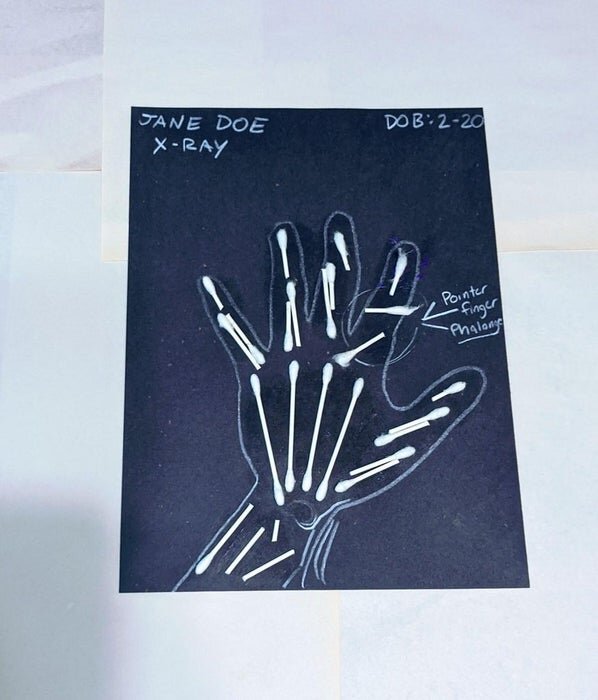An X-ray is a type of electromagnetic radiation known for its ability to see through our skin and show us images of the bones beneath it.
X-rays were discovered in 1895 by Wilhelm Conrad Röentgen. According to a “History of Radiology,” Röentgen observed crystals near a high-voltage cathode-ray tube exhibiting a fluorescent glow, even when he shielded them with dark paper.
Some form of energy was being made by the tube that was shielded by the paper and making the crystals glow. This unknown energy was called X-radiation
Experiments showed that this radiation could pass through soft tissues but not bone and would make shadow images on photographic plates. What we know as the X-Ray today.
For this activity we are exploring the bones of the hand as an X-ray.
When you look at your body, how many bones do you think make up one of your hands?
One of our hands is made up of 27 individual bones! Can you imagine?
Supplies:
Dark paper (or cardboard)
Q-Tips (or strips of white paper)
Glue
White crayon or color pencil
Scissors


